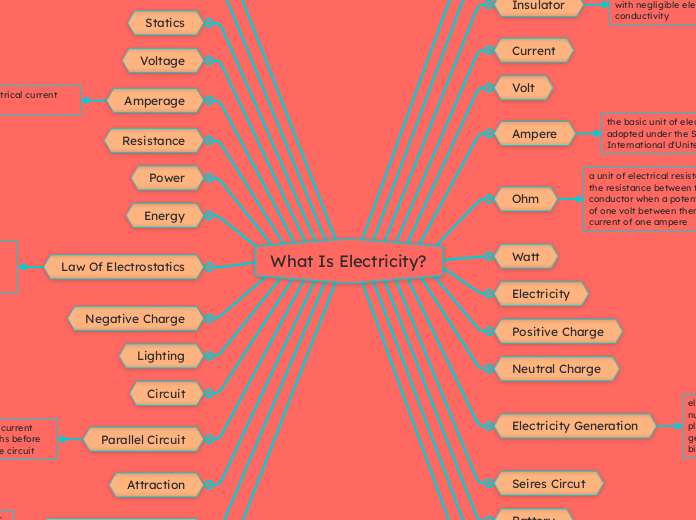What Is Electricity?
Protons
Neutrons
Insulator
a material such as glass or porcelain with negligible electrical or thermal conductivity
Current
Volt
Ampere
the basic unit of electric current adopted under the Systeme International d'Unites
Ohm
a unit of electrical resistance equal to the resistance between two points on a conductor when a potential difference of one volt between them produces a current of one ampere
Watt
Electricity
Positive Charge
Neutral Charge
Electricity Generation
electricity generated from fossil fuels, nuclear power plants, hydro power plants (excluding pumped storage), geothermal systems, solar panels, biofuels, wind, etc.
Seires Circut
Battery
Repulsion
When two poles or charges pushes away each other
Non-Renewable Resources
Electrons
Conductor
a substance that readily conducts e.g. electricity and heat
Statics
Voltage
Amperage
the strength of an electrical current measured in amperes
Resistance
Power
Energy
Law Of Electrostatics
the magnitude at which electrostatic charges repel or attract is “directly proportionate” to the magnitude of charges when multiplied.
Negative Charge
Lighting
Circuit
Parallel Circuit
a closed circuit in which the current divides into two or more paths before recombining to complete the circuit
Attraction
Renewable Resources
any natural resource (as wood or solar energy) that can be replenished naturally with the passage of time
Friction
effort expended in moving one object over another with pressure
